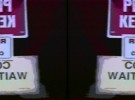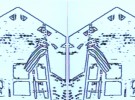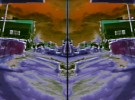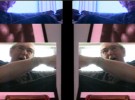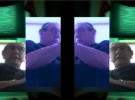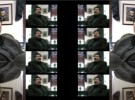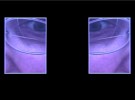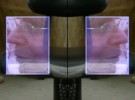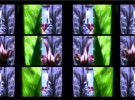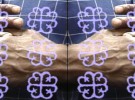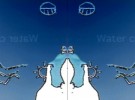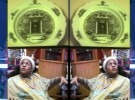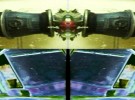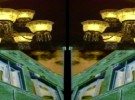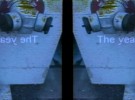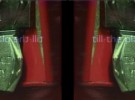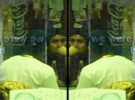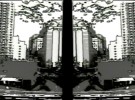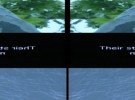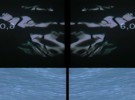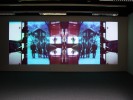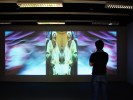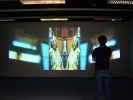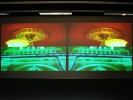When We Came, 2004
A one hour, two channel video work, commissioned by the Hudson Valley Center for Contemporary Art.
Video Stills:
Photo Documentation:
Video Excerpt:
(Note: Best watched in High Quality – Click video once to play, then after video begins click the “HQ” icon on the lower right. Video will restart in High Quality.)
[tubepress mode=’playlist’, playlistValue=’41558420184570AA’]
Download PDF of the New York Times Review:Â
VIDEO REVIEW; “The History of Peekskill, as Collage” By BENJAMIN GENOCCHIO, Jan 23, 2005
Project Description:
“When We Came” tells the story of Peekskill from the dawn of human beings, and uses the Hudson River as a point of focus. The mirrored video makes reference to water as reflection and to the flip side of history that we are seldom aware of, an angle from which our own language and perceptions seem foreign and “other”.
It begins with the text of an African creation myth from Ghana. Africa – the origin point for human kind. A great number of African Americans originally came from Ghana and most passed through Almina Castle in Cape Coast, a Dutch fort in the slave trade. Peekskill has been a key center in African American development and resistance in the New World since before the Revolutionary War.
The African myth explains the origin of Water Sun and Moon, and why Water still lives with us on the earth. Peekskill is about water, about the Hudson River. It formed from a retreating glacier at the end of the last ice age. It is a New World that has been continuously being rediscovered for the last 12,500 years. The early Native American Paleo People, the Shield Archaic people, the Mahicans, the Iroquois, the Wappinger, and the Kitchawak an Algonquian people, who lived in the town of Peekskill or Sackhoes, as they liked to call it, before the European peoples ever even arrived.
The story of Peekskill is about visitors coming up the Hudson from New York. This includes Jan Peek, for whom the town is named, (“Peek’s Creek” in Dutch) who lived in the settlement of New Amsterdam which was later renamed New York. Jan came up the Hudson to trade with the Kitchawak at Sackhoes. Other New Yorkers also traded goods by boat and later by car and train. They brought ideas too. Young Russian Jewish women fleeing the nightmare of the Triangle Shirt Waist Factory fire and trying to start a better life free of labor exploitation. African Americans coming up from the AME Zion Church, and from Harlem, working towards equality. Soho artists driven out by soaring real estate prices looking for a place to create and express their art.
They came from other places besides New York too. The Italians, the Irish, the Chinese as they built the railroads. The British first to burn the place, and later to establish families. African Americans fleeing slavery in the South via the Underground Railroad. Equadorans, Guatemalans, and others from even further South, looking for a better life.
There is a long and tumultuous history of arrivals in this place, filled with great strife and great beauty. We are only the current caretakers and ours is a momentary passing in the long history of the river valley. The “Muh-he-kun-ne-tuk” – as the Mahicans would call it when they first came 6000 years ago. “The place where the waters are never still”. In this work we too arrive. The strangers, the outsiders, the new comers. We try to document, to make a record, so others who come after can know what we experienced, how we felt. So they might see what we saw – when we came.
Conceived by Paul Clay, Video Mix: Paul Clay,  Audio Mix: Arrow Chrome.
